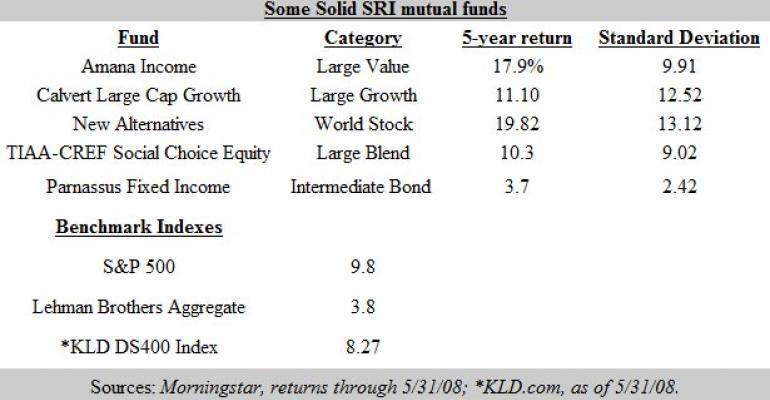Green investing is gaining traction around the globe, according to the 2008 CapGemini/Merrill Lynch “World Wealth Report.” Today, there are many more vehicles through which to invest in, say, alternative fuels, renewable energy and other advanced technologies; there are green dedicated mutual funds, ETFs, other pooled products and alternative investments. And investors seem to like their options: Total investment in clean technologies surged to $117 billion in 2007, up 41 percent from 2005.
Venture capital has played an important part in this growth, with some $5.2 billion in investments in 2007 in North American and Europe, up from $3.6 billion in 2006 and just $174 million in 2001, says the report. And most of these investments have come from wealthy private clients as opposed to giant institutions.
Still, wealthy North American investors seem less willing to invest in green projects than their global counterparts. Only 5 percent of high-net-worth investors and 7 percent of ultra-high-net-worth investors in North America allocate part of their portfolios to the effort. Those numbers are in the double digits in every other region of the world, with the greatest numbers of HNW and ultra-HNW individuals allocating to green technologies and alternative energy in the Middle East, at 17 percent and 20 percent, respectively, and Europe, at 20 percent and 21 percent, respectively.
In fact, North Americans seem to think green projects are not great investments: The vast majority says they make such investments out of a sense of social responsibility. By contrast, more than half of international respondents say their motive for green investing is financial returns.
Nonetheless, the number of wealthy Americans allocating money to green investments may grow as the younger generations amass their millions. A “Northern Trust” study conducted in January found that among high-net-worth investors, Generation X (those between 28 and 42) is much more interested in socially responsible investing, in general, than its older Boomer peers. In fact, 41 percent of Gen-X millionaires own SRI investments, compared to 18 percent of Baby Boomers, and 13 percent of the so-called Silent Generation.
Of course, investing in socially responsible projects does not always yield the greatest returns: The most popular benchmark for socially responsible funds, KLD’s Domini 400 Social Index (DS400), has trailed the S&P 500 over the one-year, three-year, five-year and 10-year periods by 1 percent to 2 percent. Still, the DS400 is a hair ahead of the broad market index if its returns are measured from its inception in 1990. Since that time, the DS400 is up 11.06 percent versus the S&P 500’s 10.6 percent. Many other SRI mutual funds have also notched healthy returns over the period—some examples are in the chart below.
“The funds that focus on stocks related to alternative energy and energy efficiency enjoyed about three years of double digit returns through the end of 2007,” says Michael Herbst, an analyst with Morningstar who covers SRI funds.
Herbst says many of the funds have been hammered in the first five months of 2008, but adds that some of them have made a comeback in the last three. Continued upward pressure on energy prices, might give an extra boost. “As people become more concerned about energy costs, they may do better,” he says.







